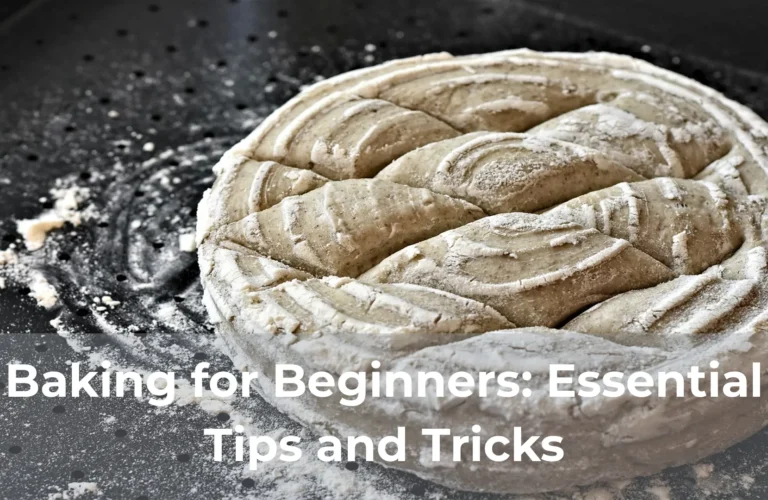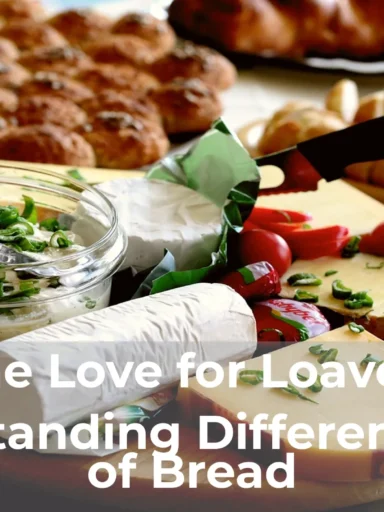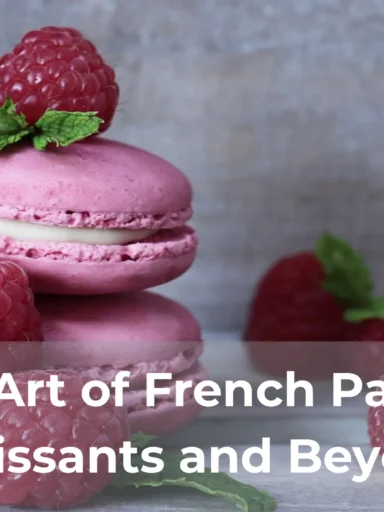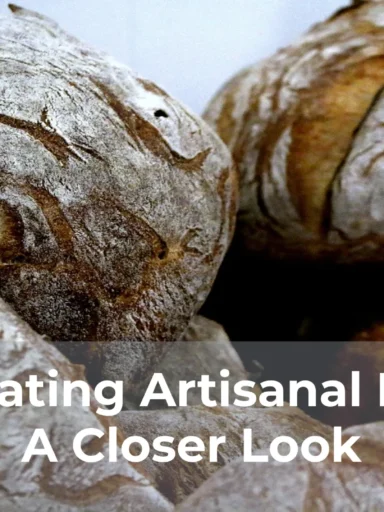Baking for Beginners: Essential Tips and Tricks
Are you a beginner in the world of baking? Don’t worry, we’ve got you covered! In this comprehensive guide, we will provide you with essential tips and tricks that will help you navigate the delicious world of baking with confidence. Whether you want to bake cookies, cakes, or bread, we have practical advice to set you on the path to becoming a skilled baker.
Baking can be a delightful and rewarding hobby, but it can also be intimidating for beginners. With our expert tips, you’ll learn the fundamentals of baking, from understanding different ingredients to mastering key techniques. We’ll walk you through essential tools you’ll need in your kitchen, and share insider secrets that will take your baked goods to the next level. Get ready to impress your friends and family with your homemade treats!
1. The Art of Baking: A Beginner’s Guide
Are you a baking enthusiast looking to explore the art of creating delicious treats from scratch? Look no further! Our beginner’s guide to baking is here to help you embark on an exciting culinary journey. Whether you’re a complete novice or have dabbled in baking before, this comprehensive guide will provide you with all the essential tips and techniques to get started.
From understanding the role of different ingredients to mastering basic baking methods, we will cover everything you need to know to create delectable cakes, cookies, breads, and more. With step-by-step instructions and helpful illustrations, you’ll quickly gain confidence in your baking abilities. So put on your apron, grab your mixing bowl, and let’s dive into the art of baking together!
But baking is not just about following recipes; it’s also an opportunity to unleash your creativity. In this guide, we will explore various ways to personalize your bakes, from experimenting with flavors and decorations to trying out different shapes and sizes. Discover how to add your own unique twist to classic recipes or even create your own signature bakes. The world of baking is as much a science as it is an art, and we’ll help you strike the perfect balance between precision and imagination.
2. Essential Tools for Every Aspiring Baker
Are you an aspiring baker and looking to up your game in the kitchen? Well, you’re in luck! We have compiled a list of essential tools that every aspiring baker should have in their kitchen arsenal. These tools will not only make your baking experience more enjoyable but will also help you achieve professional-grade results. So, let’s dive in and discover the must-have tools for every aspiring baker!
First on the list is a high-quality stand mixer. Whether you’re making a simple cake batter or kneading dough for bread, a stand mixer will save you time and effort. With its powerful motor and various attachments, it can handle a wide range of baking tasks. Next, invest in a set of measuring cups and spoons. Baking is a precise science, and accurate measurements are crucial for success. A set of reliable measuring tools will ensure that your ingredients are measured correctly, resulting in consistent and delicious baked goods. Lastly, don’t forget a good-quality baking sheet. From cookies to pastries, a sturdy and well-designed baking sheet will guarantee even heat distribution and prevent your creations from burning or sticking to the pan. These are just a few essential tools, but they will undoubtedly elevate your baking skills to new heights!
3. Mastering the Basics: Measuring and Sifting
Mastering the Basics: Measuring and Sifting
When it comes to cooking and baking, mastering the basics can make all the difference in creating delicious and successful dishes. One essential skill that every home cook and baker should have in their repertoire is the art of measuring ingredients accurately. Whether it’s measuring flour for a cake or oil for a stir-fry, understanding the importance of precise measurements can elevate your culinary creations to new heights.
Another fundamental technique that goes hand in hand with measuring is sifting. Sifting dry ingredients such as flour, sugar, or cocoa powder not only helps to aerate and remove any lumps, but it also ensures even distribution and incorporation into your recipe. Sifting can make a significant difference in the texture and overall result of your baked goods, giving them a light and fluffy consistency. This step is particularly important when working with delicate or fine ingredients that tend to clump together.
4. The Science Behind Baking: Understanding Ingredients and Their Functions
Have you ever wondered why some cookie recipes call for baking soda while others use baking powder? Or why butter needs to be softened before incorporating it into your cake batter? Understanding the science behind baking can help you become a better home baker and achieve consistently delicious results. In this article, we will dive into the world of baking ingredients and their functions, unraveling the secrets behind the science of baking.
One of the key ingredients in baking is flour. But not all flours are created equal. Different types of flour, such as all-purpose, bread, cake, and pastry flour, have varying protein contents. This protein content affects the texture and structure of your baked goods. Gluten, the protein found in wheat flour, plays a crucial role in creating the elastic network that traps carbon dioxide during leavening, resulting in a light and airy texture.
Leavening agents like baking powder and baking soda are another essential component of baking. Baking powder is a combination of baking soda, an acid, and a moisture absorber. When mixed with liquid and heat, it releases carbon dioxide gas, causing your batter or dough to rise. Baking soda, on the other hand, is a pure alkaline compound that requires an acidic ingredient to activate it. This reaction creates carbon dioxide bubbles, which expand and leaven your baked goods.
5. Essential Techniques: Mixing, Whisking, and Folding
Mixing, whisking, and folding are essential techniques that every aspiring chef should master in the kitchen. These techniques are the building blocks of countless recipes, allowing you to create a wide variety of dishes with precision and finesse. Whether you’re making a fluffy cake batter, a smooth sauce, or a light and airy mousse, understanding how to mix, whisk, and fold ingredients properly is crucial for achieving the desired texture and consistency.
Mixing involves combining ingredients thoroughly to create a uniform mixture. This can be achieved by using a spoon, spatula, or an electric mixer, depending on the recipe. Whisking, on the other hand, is a technique used to incorporate air into a mixture, resulting in a lighter and fluffier texture. Whisking is commonly used when beating eggs, whipping cream, or making meringue. By whisking vigorously or in a specific pattern, you can introduce tiny air bubbles that add volume and lightness to your preparations.
Folding is a gentle technique used to combine delicate ingredients without deflating them. This technique is commonly used when incorporating whipped cream, beaten egg whites, or other airy mixtures into a heavier base. To fold, you use a spatula or a large spoon to gently lift the mixture from the bottom of the bowl and bring it over the top, repeating until the ingredients are evenly combined. Folding allows you to maintain the airiness and lightness of the whipped or beaten ingredients, resulting in a delicate and fluffy final product.
Frequently Asked Questions (FAQ)
What are the 5 basic baking skills?
The five basic baking skills are measuring ingredients accurately, mixing ingredients properly, following recipe instructions, using the oven correctly, and understanding baking terminology and techniques.
What are some good tips to remember when baking?
Some good tips to remember when baking include measuring ingredients accurately, preheating the oven, using room temperature ingredients, following the recipe precisely, and allowing baked goods to cool before serving.
What are the 9 basic techniques used in baking?
The 9 basic techniques used in baking include creaming, folding, whisking, kneading, rubbing in, beating, rolling, chilling, and proofing. Each technique is essential for creating a variety of delicious baked goods.
What do you teach a beginner baker?
Instruct a beginner baker on basic techniques such as measuring ingredients accurately, understanding recipe instructions, and practicing patience while allowing dough to rise.




